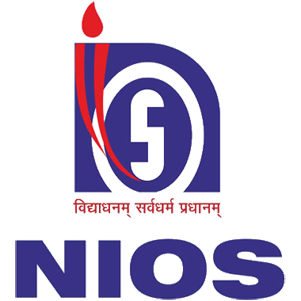Looking for:
Download windows 10 iot core raspberry pi 3

Comment : At least for me boots are slow even with the understanding this is a Pi. I tried several different microSD cards of varying vendors, sizes, and specs. Restarts from the box tended to hang so much so that out of impatience or frustration, I found myself pulling Pi power. Oddly, restarting remotely from the Windows IoT Dashboard worked better than directly on the system. Once the system initially boots, and loads, things get better depending on where work is being managed.
I found performance directly on the Raspberry Pi to be frustrating. Luckily there are alternatives…. The image helper app is no longer needed, and can be uninstalled if desired. When the dashboard runs it should display a list of Windows IoT devices connected to the network.
It likely contains default properties such as name and logon account. Double-click the listed Windows IoT Pi device to go to its properties page.
From there you can change the device name and see the default account. Notice the link to the device portal at bottom, click that link. There might be a couple matters to tend to first, such as applying updates and tweaking performance. A prompt will display for any outstanding updates, click Ok. Reboots may be required.
Rinse repeat until fully updated in which case the prompt with say 0 updates found. Reboot required. Essentially what this app does is receive UI data from the Pi and sends sensor and input data to remotely manipulate the device.
There are may more features in Windows 10 IoT Core to explore. Recommend starting with the device portal Tutorials option, lower left, to help get up-to-speed with navigating. There is also the dashboard Connect to Azure and Try some samples for development. It makes sense that Microsoft wants to enable and optimize edge devices. Extending the Windows ecosystem via Windows 10 IoT Core and being able to run it on an expanded list of devices certainly helps.
Like most emerging technology, Windows 10 IoT Core is evolving, and I look forward to future enhancements and capabilities. Comments are closed. It’ll take a little while, but the dashboard will show you the progress. Once the image has been installed on the microSD card, it’s time to eject it from your PC and go over to the Raspberry Pi. Unlike “proper” Windows 10, there’s not much of a setup process here.
You’ll be asked to choose a language and enter your Wi-Fi password to connect to the web. That’s about it. It’ll take a couple of minutes, but when booted up you’ll see the Windows 10 IoT Core splash screen. It’s deliberately light and you don’t have access to much. The Windows 10 part is designed to disappear, since once you deploy an app to your Raspberry Pi, it becomes that app.
There’s no flipping in and out of Windows and launching apps like you would on a PC. When booted, you can go back to the dashboard application on your PC, and you’ll see your Raspberry Pi listed as one of your devices. To get a feel for how things operate you can deploy a selection of sample applications to your Raspberry Pi to see how Windows disappears, and all you’re left with is the application designed to run on the IoT Core. Usually using Linux, the Raspberry Pi 3 is also one of the officially supported Windows 10 IoT core devices, and since it’s affordable, easily available and has a massive community and range of accessories, it’s an absolute winner.
You may already have the extra bits you need to make the Raspberry Pi 3 work with Windows 10 IoT Core, but if not, here’s what you’ll need to grab. You only need an HDMI cable really during the initial setup, so this affordable option is perfect. Richard Devine is an Editor at Windows Central.
Currently you’ll find him covering all manner of PC hardware and gaming, and you can follow him on Twitter and Instagram. Windows Central Windows Central. Raspberry Pi 3. This circuit board can do magical things The Raspberry Pi 3 looks like a circuit board, but it’s actually an incredibly flexible computer that can be used to power the project of your imagination. Richard Devine. Topics Raspberry Pi.
Download windows 10 iot core raspberry pi 3
I did not run into very many issues in getting Windows 10 IoT installed. During the SD card setup, I did get this error message. Next Recommended Reading. Learn Internet of Things in 21 Days. Challenge yourself. Stratis Blockchain Skill. There’s no flipping in and out of Windows and launching apps like you would on a PC. When booted, you can go back to the dashboard application on your PC, and you’ll see your Raspberry Pi listed as one of your devices.
To get a feel for how things operate you can deploy a selection of sample applications to your Raspberry Pi to see how Windows disappears, and all you’re left with is the application designed to run on the IoT Core.
These include the classic Hello World, an Internet Radio app, and something that network connects to a 3D printer. Developing is much more complex, but at least if you’re interested in this new branch of Windows 10, it’s easy and cheap to get up and running. To go further you’ll need to download Visual Studio opens in new tab and start building code. Microsoft has a whole bundle of resources opens in new tab at your disposal, however, to help you get the most from your Windows 10 IoT Core experience.
Sweet IoT. The Raspberry Pi 3 looks like a circuit board, but it’s actually an incredibly flexible computer that can be used to power the project of your imagination.
The application will now download the necessary files from Microsoft and flash them to your microSD card. It’ll take a little while, but the dashboard will show you the progress. Once the image has been installed on the microSD card, it’s time to eject it from your PC and go over to the Raspberry Pi. Unlike “proper” Windows 10, there’s not much of a setup process here. You’ll be asked to choose a language and enter your Wi-Fi password to connect to the web. That’s about it.
It’ll take a couple of minutes, but when booted up you’ll see the Windows 10 IoT Core splash screen. It’s deliberately light and you don’t have access to much.
I found performance directly on the Raspberry Pi to be frustrating. Luckily there are alternatives…. The image helper app is no longer needed, and can be uninstalled if desired. When the dashboard runs it should display a list of Windows IoT devices connected to the network. It likely contains default properties such as name and logon account. Double-click the listed Windows IoT Pi device to go to its properties page.
From there you can change the device name and see the default account. Notice the link to the device portal at bottom, click that link. A browser should pop up the Windows Device Portal for the selected device using an network subnet address at port All things considered, the device portal has a decent amount of capabilities and performance.
We simply need to make one extra download and complete one out-of-band task. Beyound that, all steps are the same. Once download is complete, right-click to mount the image and access the. Double-click the. Once started, select the correct SD card. As for the required.
Confirm the correct SD card is selected and the ffu file is identified then click Flash button. Flash will spawn a command dialog that provides percentage completion output.
Once finished, a notification pops up with overall status. If successful then remove the microSD from the app host system and insert into Pi.




